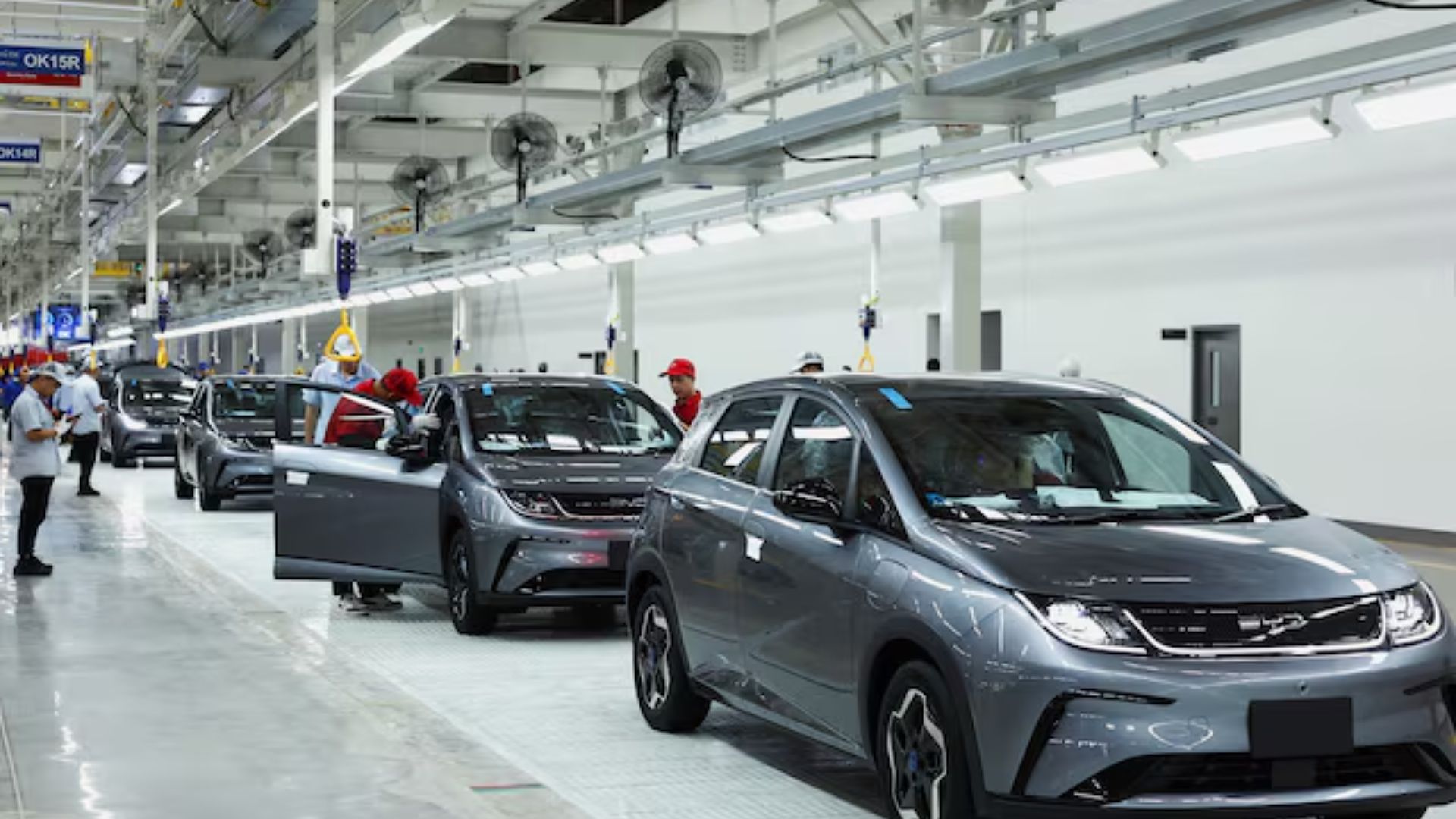Summary
- China’s car sales rise 11.2% in Oct, fastest since Jan
- Domestic champion BYD leads the rise
- Rapid growth buoyed by government subsidies
BEIJING, (Reuters) – China’s passenger vehicle sales jumped 11.2% in October year-on-year, the second straight monthly rise and the fastest growth since January, led by domestic champion BYD as automakers raced to meet annual sales targets.
Sales in the world’s largest auto market totalled 2.28 million vehicles last month and increased 3% to 17.99 million for the first 10 months of the year, data from the China Passenger Car Association (CPCA) showed on Friday.
October’s growth was the highest since January’s 57.1% gain.

Helped by government subsidies of up to $2,800 apiece for trading in older cars for EVs and more fuel-efficient cars, which CPCA secretary-general Cui Dongshu expects to continue into 2025, greener cars continue to be a standout despite a faltering economy.
China’s car sales will likely to see an annual rise of 5% in 2024, Cui said.
Luxury car sales which shrank by 7% year-on-year to 210,000 units last month, as well as weak sales of high-end extended-range hybrids, were proof of swings in upscale models despite robust growth in sales of entry-level EVs, he said.
Electric vehicle and plug-in hybrid sales grew by 56.7% from the prior year and made up 52.5% of overall sales, marking the fourth consecutive month that battery-powered cars including plug-ins outsold gasoline cars in the country.

The biggest Chinese rival to Tesla has achieved 81% of its revised sales target for this year, while domestic automakers Geely (GEELY.UL) and Stellantis-backed Leapmotor have so far hit over 80% of their 2024 goals.
EV upstart Xiaomi, which delivered cars of over 20,000 units for the first time last month, is expected to achieve its full-year target of 100,000 cars in November.
With robust sales in its home turf where BYD sells 90% of its cars, the local giant is widening its lead over second-placed Volkswagen and third-ranked Toyota.
BYD topped China’s auto sales rankings with a 15.8% share of the overall market in the first nine months, while its sales of EVs and plug-in hybrids accounted for more than a third of the country’s total, CPCA data showed.
BYD was second only to the combined sales of VW’s two joint ventures in China last year.
Globally, VW’s MQB A1 automobile platform, estimated to be the top architecture this year, will fade over the coming years, while BYD’s BLP is forecast to be the largest global platform in 2031, according to AutoForecast Solutions.

China’s car exports slowed last month with a 13% rise versus 22% in October, ahead of the EU’s EV tariffs of up to 45.3% that took effect at end-October.
($1=7.1566 Chinese yuan renminbi)











